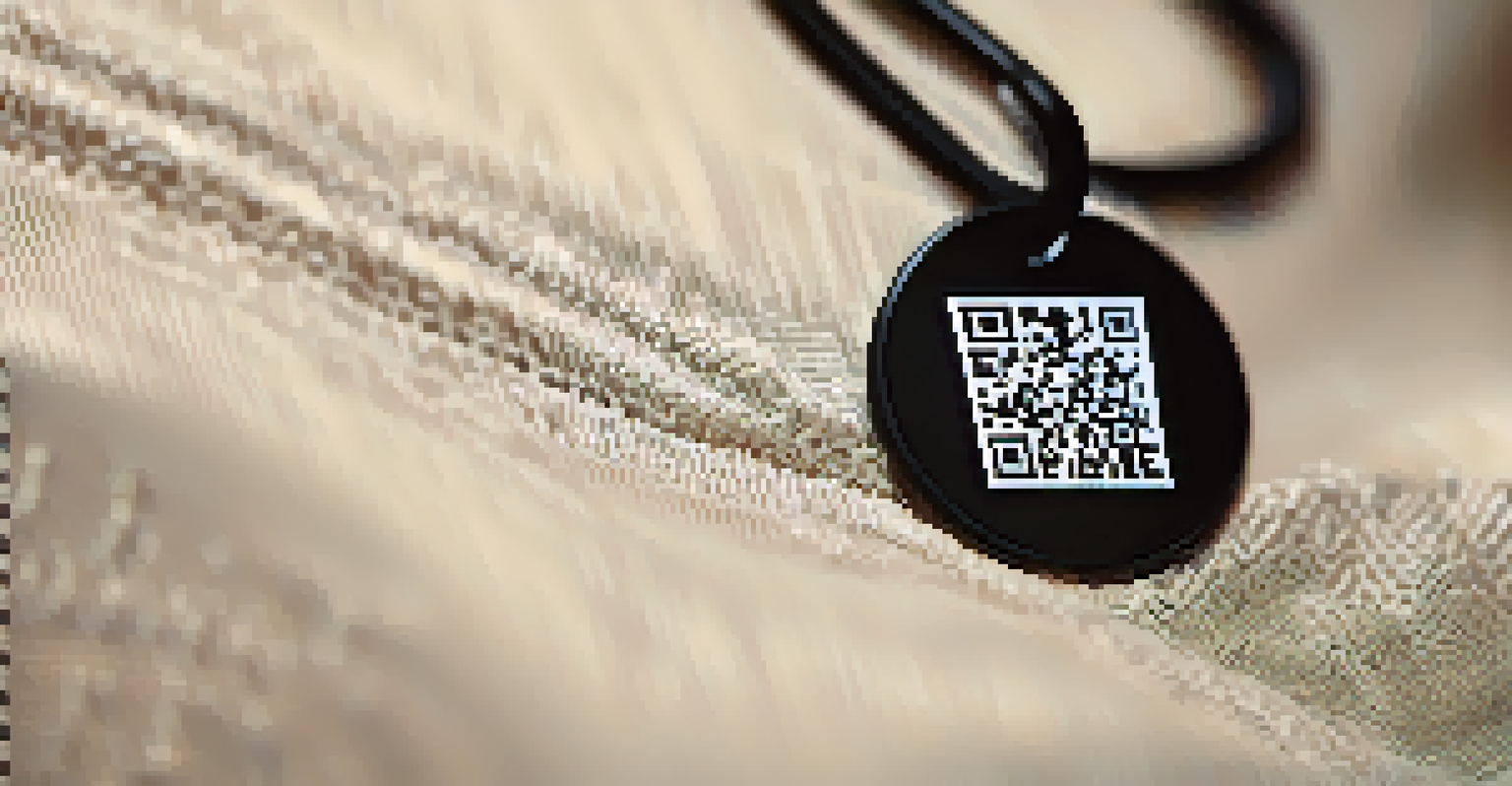Technology's Role in Fashion Supply Chain Transparency

Understanding Supply Chain Transparency in Fashion
Supply chain transparency in fashion refers to the clarity and openness about how products are made and delivered. This includes knowing where materials come from, how they're processed, and the labor conditions involved. In a world increasingly focused on ethical consumption, consumers are demanding more information about the products they buy.
Transparency is the new accountability.
By gaining insight into the supply chain, brands can build trust with their customers, which is crucial in today’s competitive market. Transparency not only helps consumers make informed choices but also holds companies accountable for their practices. This shift towards transparency aligns with a growing trend of sustainability in the fashion industry.
Ultimately, supply chain transparency empowers consumers and encourages brands to adopt ethical practices. With technology at the forefront, the journey toward a more transparent fashion industry is gaining momentum, paving the way for positive change.
The Role of Blockchain in Fashion Supply Chains
Blockchain technology is revolutionizing the way fashion brands track their products. By creating a permanent and tamper-proof record of each step in the supply chain, blockchain provides unparalleled transparency. For example, a consumer can scan a QR code on a garment to see its entire production journey, from raw materials to final product.

This technology not only helps verify authenticity but also ensures that ethical standards are met throughout the process. Brands can use blockchain to showcase their commitment to sustainability by providing consumers with detailed information about sourcing and labor practices. With this level of transparency, consumers can feel confident that their purchases align with their values.
Transparency Builds Consumer Trust
Supply chain transparency fosters trust between brands and consumers by providing clarity on sourcing and labor practices.
As more companies adopt blockchain, the fashion industry is likely to see a shift towards more responsible production practices. This technological innovation helps bridge the gap between consumer expectations and corporate accountability, fostering a culture of trust and responsibility.
Leveraging IoT for Real-Time Supply Chain Insights
The Internet of Things (IoT) is another game-changer for supply chain transparency in fashion. By connecting devices and sensors, IoT enables brands to gather real-time data on inventory levels, product conditions, and logistics. This constant flow of information allows companies to respond swiftly to changes and challenges in the supply chain.
In a world where consumers are increasingly concerned about ethics, brands must adapt or risk being left behind.
For instance, if a shipment is delayed, brands can notify customers immediately, enhancing the overall shopping experience. Moreover, IoT can help monitor working conditions in factories, ensuring compliance with labor laws. This level of oversight not only protects workers but also enhances brand reputation.
As IoT technologies become more integrated into the fashion supply chain, the potential for increased transparency and efficiency grows. This interconnectedness helps brands build stronger relationships with suppliers and customers alike, ultimately fostering a more sustainable industry.
Artificial Intelligence in Supply Chain Management
Artificial Intelligence (AI) is playing a significant role in improving supply chain transparency by analyzing vast amounts of data. AI algorithms can predict trends, manage inventory, and optimize logistics, making the supply chain more efficient. For fashion brands, this means being able to respond to consumer demands more quickly and effectively.
Additionally, AI can help identify potential risks in the supply chain, such as unethical labor practices or environmental violations. By flagging these issues early, brands can take corrective action and maintain their commitment to transparency. This proactive approach not only enhances accountability but also improves overall supply chain resilience.
Technology Enhances Supply Chain Clarity
Innovations like blockchain and IoT are revolutionizing fashion supply chains, offering real-time insights and accountability.
As AI continues to evolve, its integration into fashion supply chains will likely become more sophisticated. This evolution will further empower brands to ensure ethical practices and transparency, ultimately benefiting both consumers and the environment.
Consumer Demand for Transparency and Ethical Practices
Today's consumers are increasingly aware of the impact their purchases have on the world. They are demanding greater transparency from brands, particularly in the fashion industry, where issues like sweatshop labor and environmental degradation are prevalent. This shift in consumer expectations is prompting brands to adopt more ethical practices.
Transparency is not just a trend; it's becoming a requirement for brands looking to maintain customer loyalty. By providing information about sourcing, production methods, and labor conditions, brands can connect with consumers on a deeper level. This connection fosters trust and encourages brand loyalty, making transparency a key competitive advantage.
As consumers continue to prioritize ethical consumption, brands must adapt to this changing landscape. By leveraging technology to enhance transparency, fashion companies can meet consumer demands while also contributing to a more sustainable future.
The Importance of Collaboration in Supply Chain Transparency
Achieving transparency in the fashion supply chain requires collaboration among various stakeholders, including brands, suppliers, and consumers. By working together, these parties can share information and best practices, creating a more transparent and ethical industry. This collaborative approach fosters open communication and builds trust throughout the supply chain.
For instance, brands can partner with suppliers to ensure that ethical standards are being met and that all parties are aligned in their commitment to sustainability. This cooperation can lead to innovative solutions and improvements that benefit everyone involved. Furthermore, involving consumers in the conversation can help brands understand their expectations and enhance their transparency efforts.
Collaboration Drives Ethical Practices
Achieving transparency in fashion requires collaboration among brands, suppliers, and consumers to share information and foster trust.
Ultimately, collaboration is essential for driving meaningful change in the fashion supply chain. By fostering partnerships and engaging with all stakeholders, the industry can move towards a more transparent and responsible future.
Future Trends in Fashion Supply Chain Transparency
As technology continues to advance, the future of fashion supply chain transparency looks promising. Emerging technologies such as augmented reality (AR) and machine learning are poised to further enhance transparency efforts. For example, AR could allow consumers to visualize the supply chain process, providing a more immersive understanding of their products.
Additionally, as more brands embrace sustainable practices, the demand for transparency will only grow. This trend will likely push companies to adopt innovative technologies that provide clear insights into their supply chains. The fashion industry is set to undergo a significant transformation, driven by consumer expectations and technological advancements.

In conclusion, the path towards greater transparency in the fashion supply chain is paved with exciting opportunities. As brands leverage technology and collaborate with stakeholders, they can create a more responsible industry that prioritizes ethical practices and consumer trust.